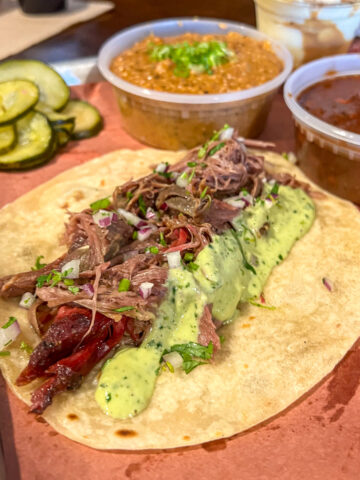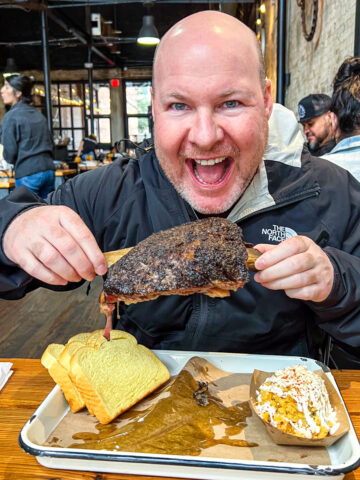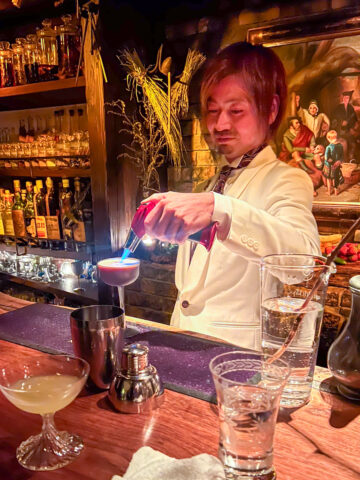Twenty-four years ago, my best friends from college and I parted ways in Italy ten days into a summer-long backpacking trip. Their unexpected desire to go home early left me half a world away from everyone I knew. One of my first experiences as a solo traveler was to eat alone.
Looking back, eating out alone in Florence seems like a piece of cake or, should I say, pizza.
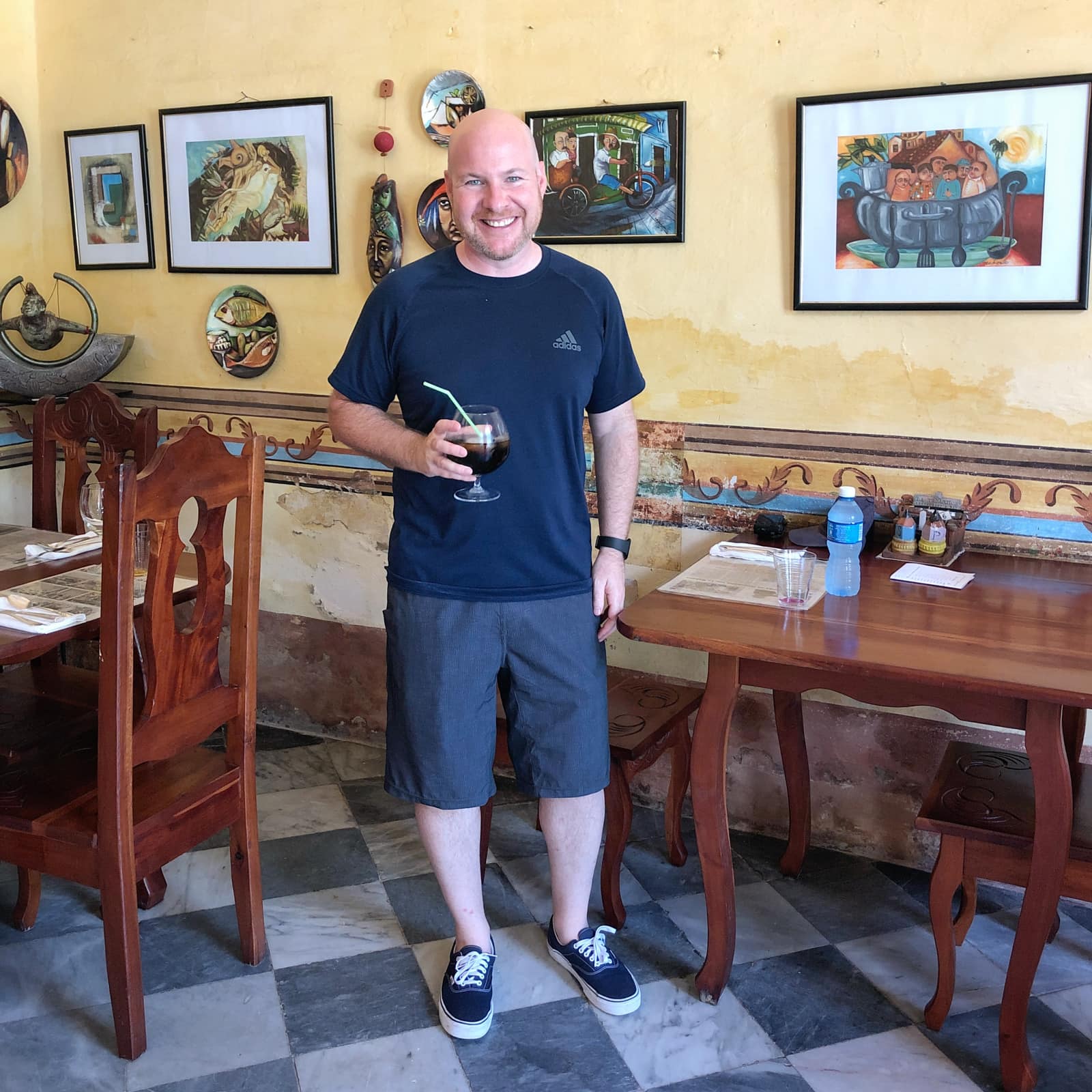
However, at the time, I felt mixed emotions—excited by my decision to stay in Europe but nervous, too.
A guy has to eat, though, and eat I did. Before traveling to Nice, London, Ireland, and Paris, I returned to Venice (my friends weren't enamored with it like me).
My first solo travel experience left me with a newfound sense of independence and self-reliance. I could safely and efficiently navigate a foreign continent and have a blast doing it.
Sure, I felt lonely at times. But, I also met more new people because I didn't have friends to rely on for company.
Learning to accept occasional feelings of loneliness as part of the travel experience serves me well.
I've become a pro at eating alone in the two decades since, whether at home or abroad.
The latter came more naturally, perhaps because I got an earlier start or I'm less self-conscious outside the United States.
The decision to become a food writer and start this blog led me to double down on being a solo diner, and it was also the catalyst to conquer a longstanding fear of going to bars alone.
Getting over my fears of barhopping and eating out alone has led to countless good meals and made traveling more fun and interesting.
And then there's the bonus of feeling at ease with my own company and doing something others find scary (or even inconceivable).
In this article, I'll share a little about the psychology of dining out alone. Plus, some of the best ways to conquer social fears and become more comfortable eating alone.
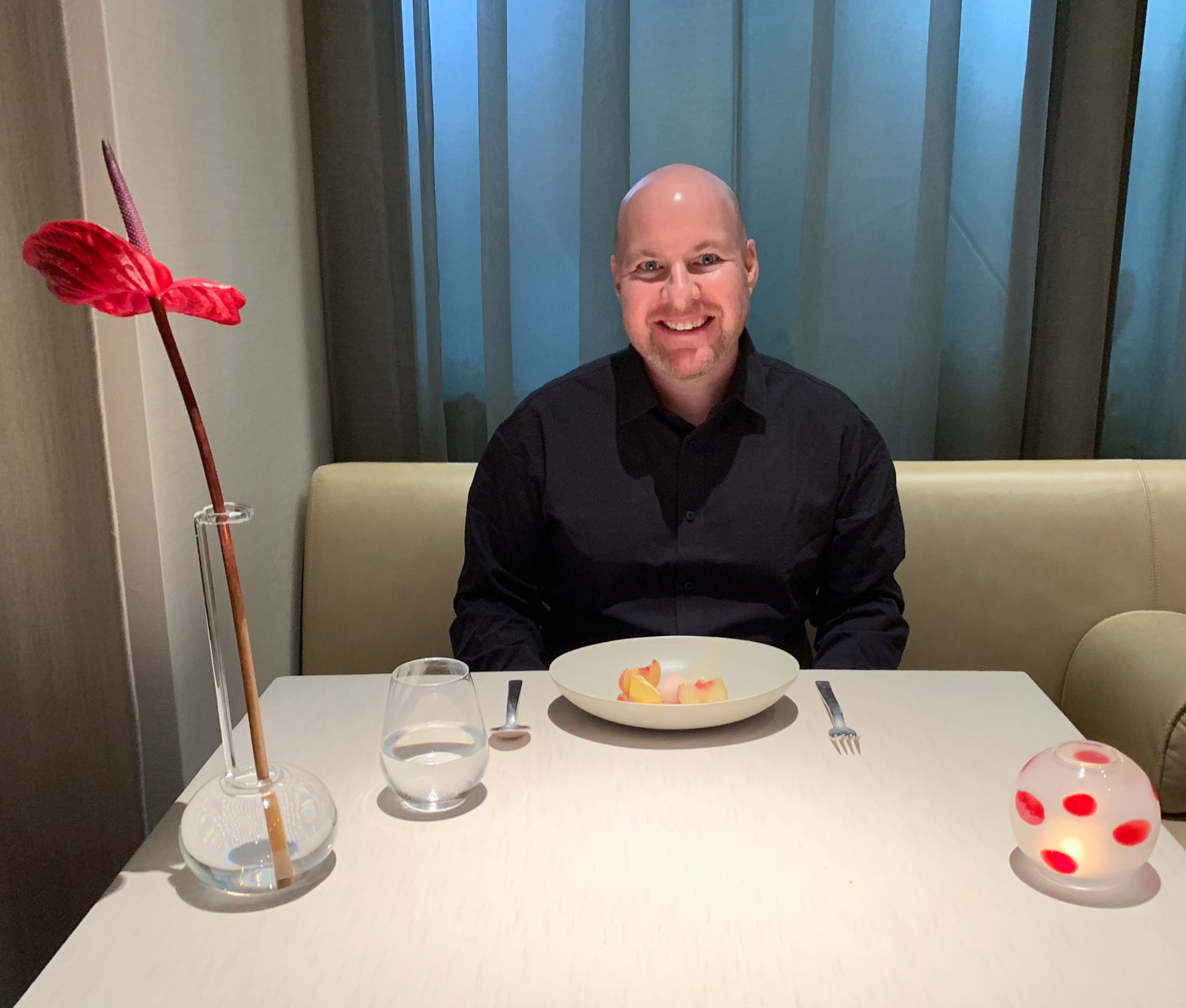
Table of Contents
Psychology of Eating Out Alone
Dining solo can be scary for numerous reasons. Humans are social creatures, and we have been throughout much (if not all) of our evolution.
For thousands of years, we lived in small hunter/gatherer tribes, where resources were shared, and those in the tribe survived longer than those on their own.
So, besides worries of judgment by others, if we're dining alone, there's also an ancient part of our brain that feels existential fear when we see others eating in groups while we're alone.
It's as if we've been cast out of the tribe to fend for ourselves.
However, for most of you reading this article, food insecurity is likely not an issue and perhaps never has been. I'm grateful it hasn't been for me.
Since biology doesn't evolve as fast as a civilization, we may know that it's safe to eat alone on an intellectual level, but our nervous system can still give us butterflies.
This is where Cognitive Behavioral Therapy (CBT) and Exposure Therapy can help. They're scientifically proven approaches to help people overcome anxiety.
I began practicing them while working with a therapist after learning I had social anxiety in my twenties.
Explaining how they work is beyond the scope of this article. However, I wanted to mention them as they've positively impacted my personal growth and quality of life.
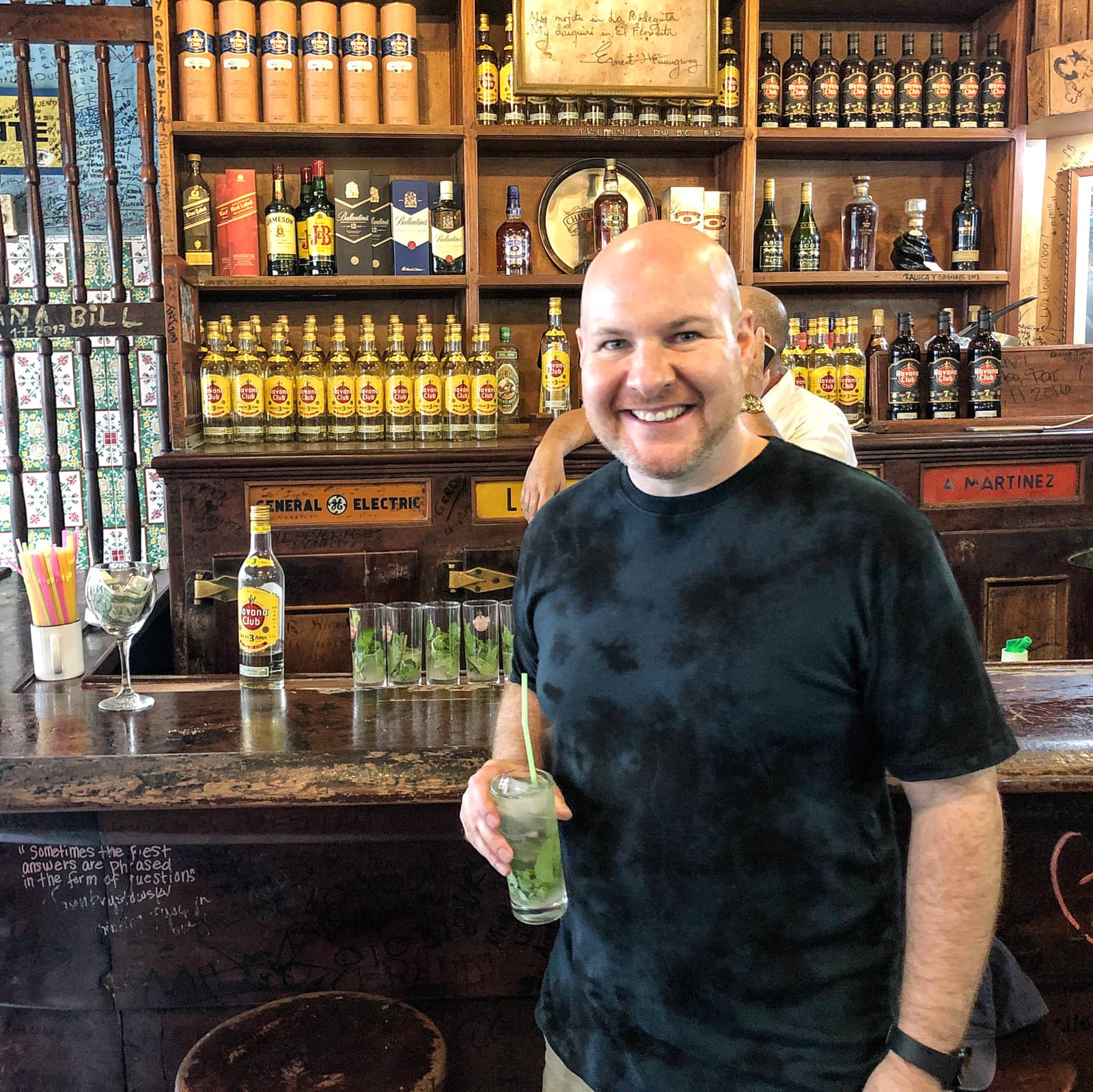
Tips to Conquer Your Fears
Imagine feeling safe and comfortable walking into any food market, new restaurant, or fine dining establishment on your own and being able to relax and fully enjoy the experience.
You're confident doing so, whether around the block from home or in another country where there's a language barrier.
How much do you stand to gain in terms of freedom and experience? Regardless of how much anxiety the idea gives you now, it's possible.
The following tips are based on exposure practices, which can help you gradually reduce your fear of specific situations, such as going out to eat alone.
Start Small
When it comes to building confidence in social situations, a great way to approach it is to start small and work your way up.
If your goal is to eventually feel comfortable eating out alone anywhere in your hometown, start with casual spots like a cafe or food truck near where you live.
The casual vibe can help you feel at ease, and the proximity to home can provide a sense of safety.
Are you embarrassed after you trip and fall, shattering your mug of mochaccino in the middle of a packed coffee shop? You can be home and safe in a matter of minutes.
That said, it's a good idea to challenge yourself to stick around long enough to enjoy your glass of wine, coffee, or meal.
When we flee a situation because of nervousness or embarrassment, rather than actual danger, we reinforce our anxiety.
Try not to trade short-term comfort for long-term improvement.
Sticking it out, despite your nerves, trains your brain to see there's nothing to be afraid of.
You're unlikely to get over your fear of eating out alone with one or two experiences.
Repetition is critical, which is another good reason to start with cafes -- they're inexpensive; you can go often. Get tea, a bottled drink, or a pastry if coffee isn't your thing.
It doesn't matter what you buy, just that you spend as much time there alone as possible so you can get used to how it feels.
Once you've gotten more comfortable hanging out at cafes, challenge yourself to a casual, sit-down restaurant.
Got the hang of those? Try one of the fine dining restaurants you've had your eye on for years.
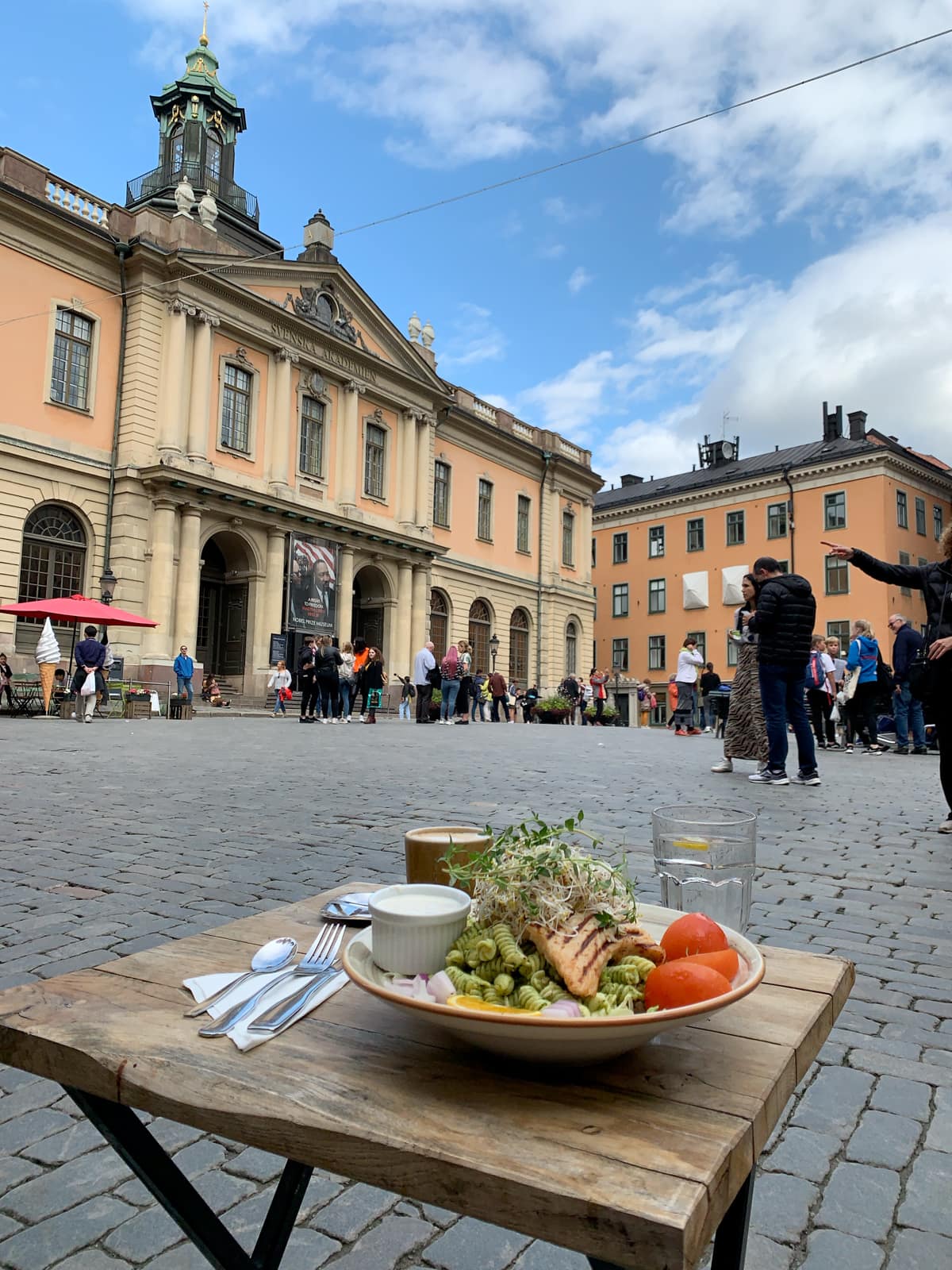
Choose the Time and Day Wisely
Just as picking suitable venues can make a big difference, so can choosing the optimal time and day for your outings.
If the idea of walking into a busy cafe on a Saturday morning worries you, try 3 p.m. on a Wednesday. Avoiding peak hours can set your mind at ease before getting there.
For restaurants, start with lunch instead of dinner—the latter lends itself more toward couples on dates and intimate gatherings of friends and family.
It's easier to feel self-conscious about being there alone if everyone else is engaged in lively conversation.
The same goes for Sunday brunch, which I believe can be even more anxiety-provoking than grabbing dinner alone.
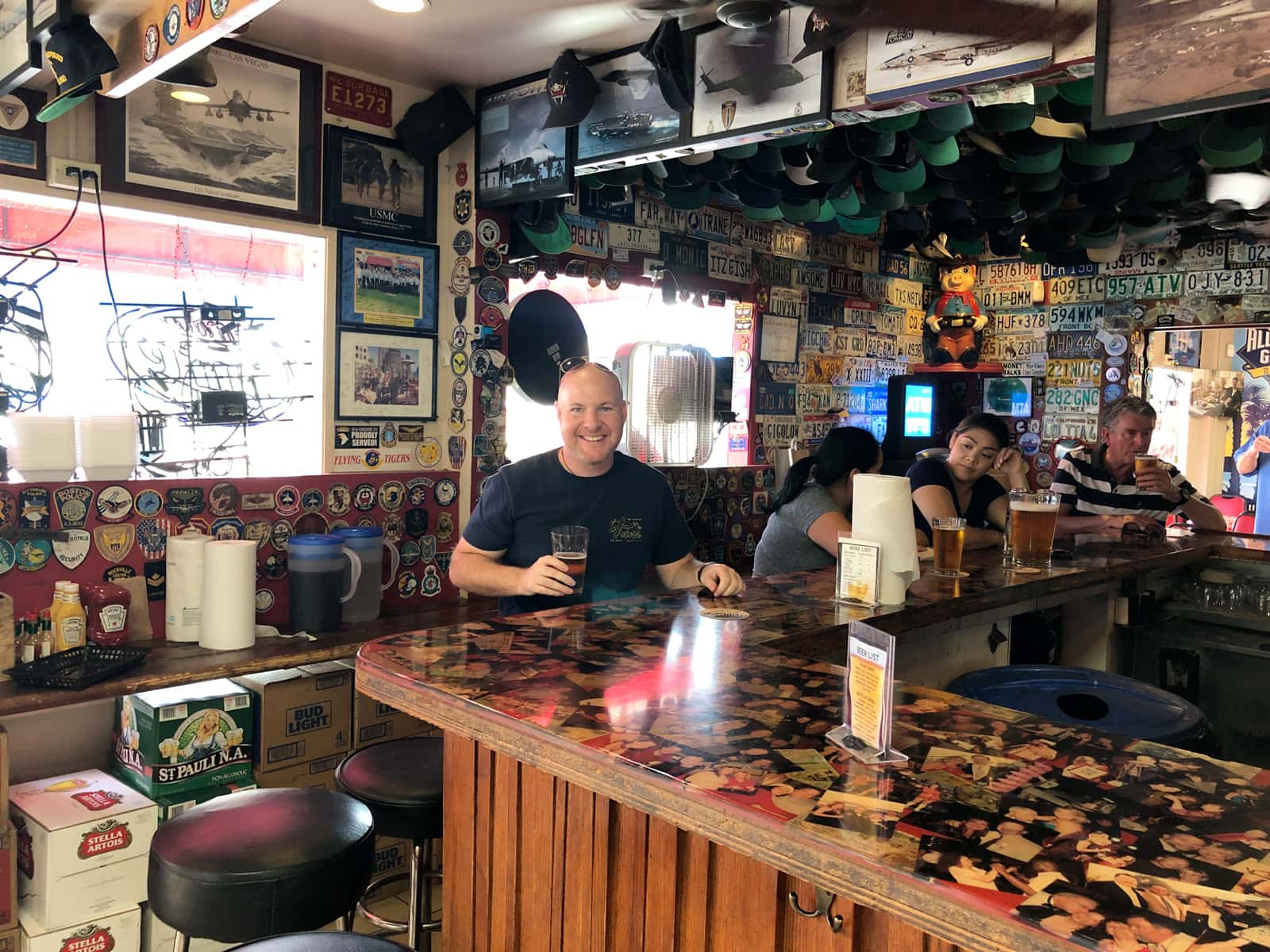
Where to Sit When Eating Alone
When it comes to dining alone, all seats are not created equal. Choosing where to sit consciously can help alleviate the anxiety of being on your own.
Bars
Pulling up a bar stool gives you easy access to the bartender and other patrons who may be open to conversation.
Sushi bars are perfect for solo diners, as you can usually engage directly with the chefs.
And even if you're not feeling chatty, the proximity to other people can help you feel less alone.
Open Kitchens
I love sitting near open kitchens, where I can be close to the culinary action.
Windows
Another approach for the shy folks reading is to sit near a window to watch people or perhaps enjoy the view.
When I make a lunch reservation, I often ask to be seated near a window to enjoy the view and natural light (which makes for better food photos).
Communal Tables
In Austin, Texas, communal tables are a common sight on outdoor patios. Sway, a modern Thai restaurant, has communal tables inside.
Choosing a communal table can open the door to casual conversation with your fellow diners and shared experiences. Who knows, maybe you'll make some new friends.
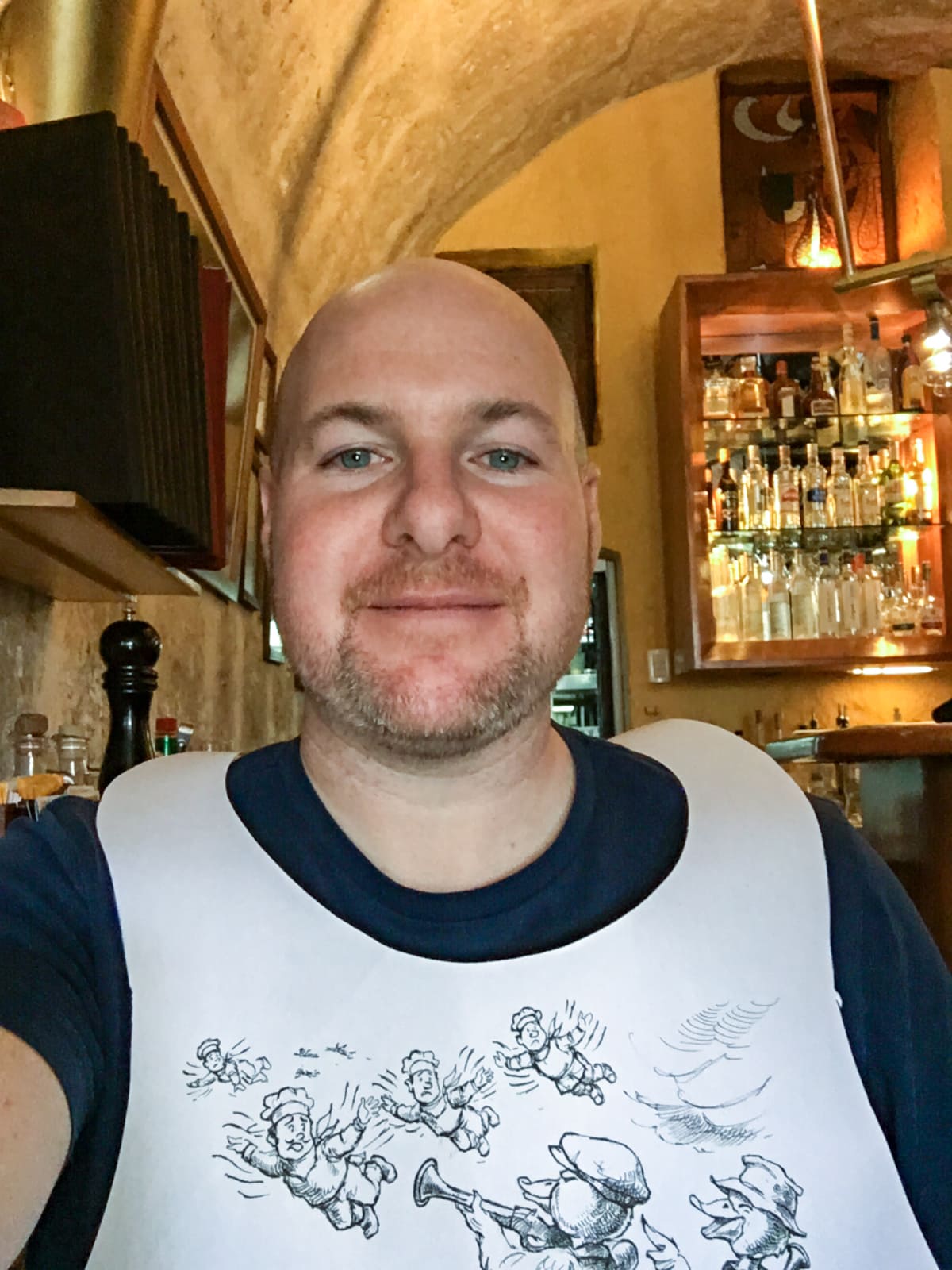
Have Fun
Speaking of photography, I've taken pictures of my food since cameras were added to phones. And now, thanks to social media, it's so typical nobody bats an eye.
Dining alone gives me great liberty to have fun with my food photography. I don't get too crazy, but I take my time and play with different shots and angles.
I never bought a DSLR camera because I knew I'd feel more self-conscious taking it out in restaurants. I've relied on the ever-improving iPhone instead.
I used to take trips with paperback books and a travel journal in the old days. I'd bring either to eat so I could get lost in a good book or catch up on documenting my adventures.
These days, if I'm in the mood, I'll read from my Kindle app. But, more likely, I'll be scrolling through Instagram and Twitter, which require less attention.
Ask Questions
Another way to feel less alone when going out for solo meals is to make small talk with the host or hostess and ask your server lots of questions.
If you're usually more reserved, try to lean into being super inquisitive. Ask questions about the menu, the restaurant's history, and the chefs.
If the staff is attentive, they'll meet your energy, and you'll learn more than you would dining out with friends.
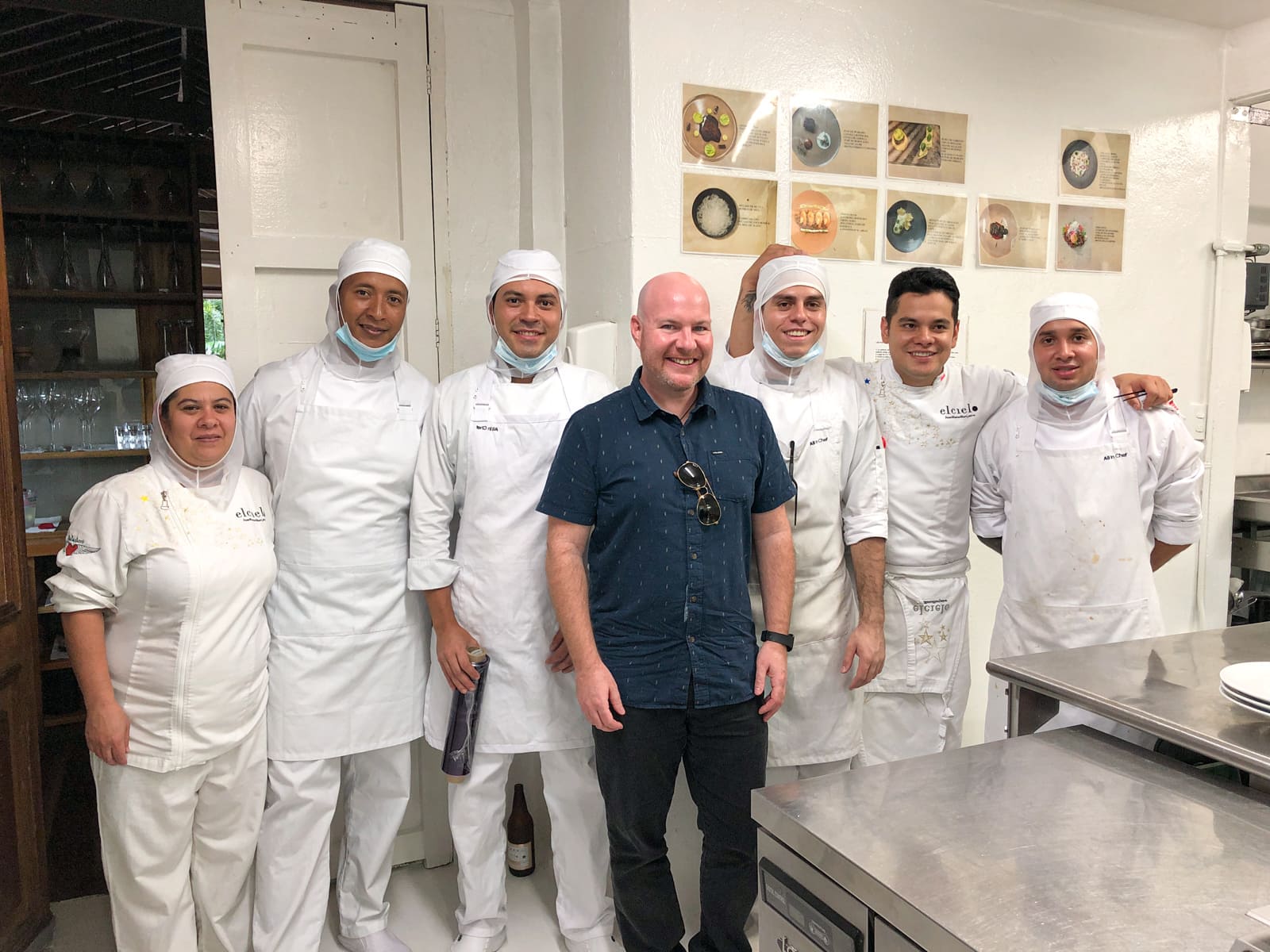
Visit the Kitchen
The first time I ate at El Cielo in Medellín, my friend, a chef, asked if we could see the kitchen at the end of dinner.
As they were near the end of service and just cleaning up, the waiter said it was okay and walked us over. It was neat to see the inner sanctum of such a fancy restaurant.
When I returned in 2018 for lunch, I was on my own and asked if I could see the kitchen for old times' sake.
The waiter again said yes, only this time they also offered to take my picture with all the chefs. It was a fun moment and gave me a chance to thank them personally.
A few months later, in Milan, I asked to see the kitchen at VUN Andrea Aprea and ended up with Chef Aprea himself.
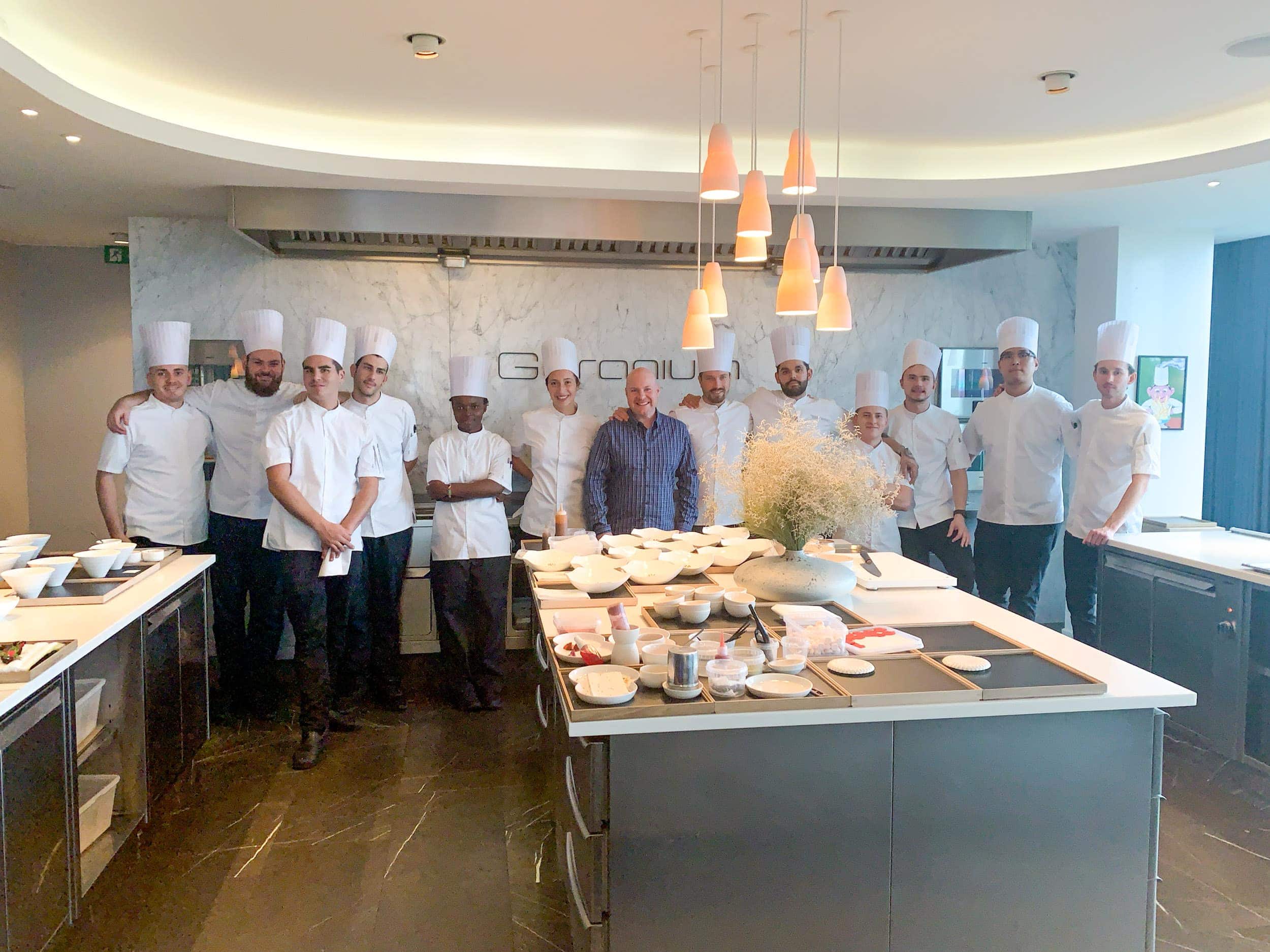
The following year, when I was dining alone at Geranium, a three-star Michelin restaurant in Copenhagen, the waiter offered to give me a tour before dessert.
We walked through the wine cellar into a private dining room with a kitchen and two prep kitchens before entering the main dining room.
When I asked for a photo at the end of my three-and-a-half-hour birthday lunch, I was surprised to see the entire kitchen staff come together.
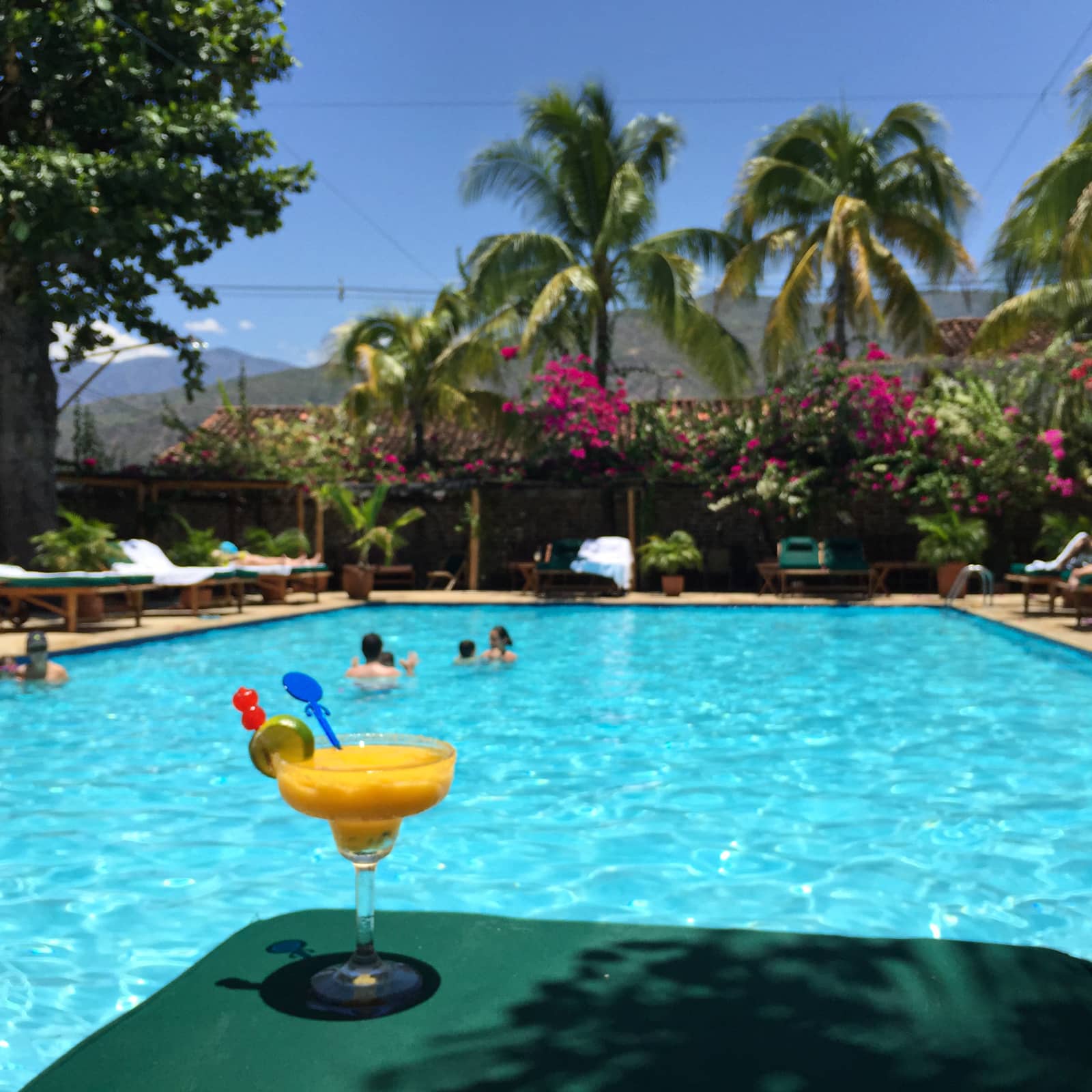
More Ideas to Enjoy Eating Alone
If all of the above still sounds overwhelming, consider these ideas.
Sign up for a tour, tasting, or class
Group tours and cooking classes bring strangers together for a limited time. They're structured and facilitated to take the pressure off of you.
Some of the standout experiences I've had over the years include:
- Cooking class in Chiang Mai, Thailand
- Bicycle winery tour in Mendoza, Argentina
- Tequila tour outside Guadalajara, Mexico
- Paella cooking class in Barcelona, Spain
- Food and Ferrari tour in Emilia-Romagna, Italy
Find an accountability buddy
Tell someone you trust about your desire to get more comfortable eating out alone. Ask if they can help you stay accountable to your goal.
Message this person to share the details when you decide where and when you're going out alone.
You'll increase your odds of taking action by letting someone else know and likely feel a little safer doing so since this person knows your whereabouts.
Ideally, they'll also cheer you on before and after your experience.
Reward yourself
Stretching out of your comfort zone can be stressful. Find small ways to reward yourself for each step forward, and you'll be more inclined to keep going.
I hope that these tips will encourage you to become more comfortable dining out alone. A beautiful sense of freedom comes with solo dining, just as with travel. I'll see you out there!


